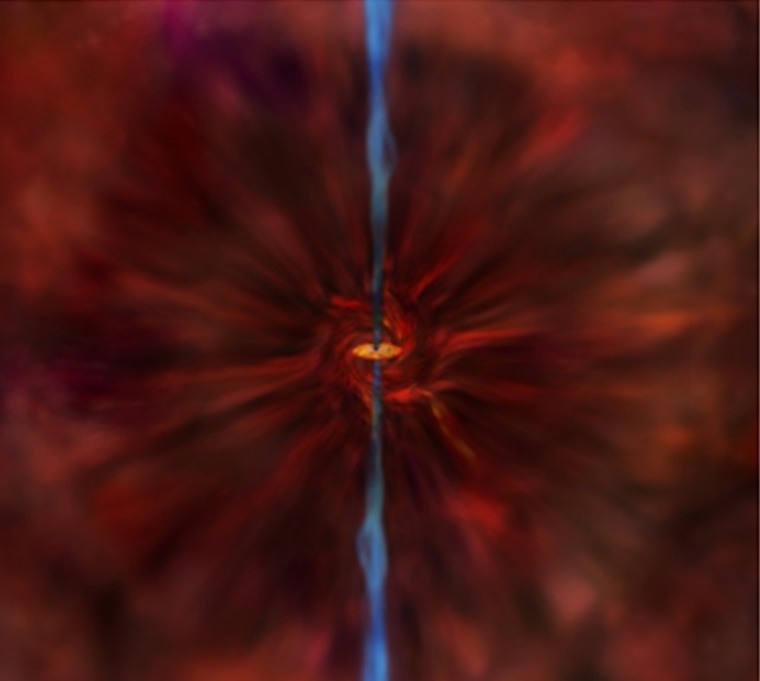The backward spin of a number of black holes could create mysterious jets of plasma that control the fate of galaxies, scientists now suggest.
At the heart of galaxies, astronomers have routinely detected what seem to be supermassive black holes millions to billions of times the mass of our sun. Roughly a hundredth of these giants spew out jets of plasma that extend out in opposite directions.
These jets control how stars and other bodies form by injecting huge amounts of energy into the universe, playing a crucial role in the evolution of clusters of galaxies, the largest structures in the universe. However, it remains a mystery as to how these jets form.
To investigate the origin of these powerful jets, scientists compared several dozen galaxies whose super-massive black holes spit jets to other galaxies whose black holes don't. All these black holes featured accretion disks — clumps of gas and dust whirling into the maws of these dark objects. Scientists have long known that black holes spin.
Relying on data collected by a Japanese space telescope dubbed Suzaku, researchers found that jets might form right outside black holes that spin in the opposite direction from their accretion disks. Such retrograde spin could warp space-time in a way that forces the innermost portions of accretion disks outward, leading to "a piling of magnetic fields that provides the force to fuel a jet," said researcher Dan Evans at MIT¹s Kavli Institute for Astrophysics and Space Research.
The scientists looked at light from the super-hot coronas of accretion disks, made of plasma heated by magnetic fields that lies above and below the disks, sandwiching them. These coronas generate copious amounts of X-rays that Suzaku can detect.
A fraction of light from the coronas reflects off the accretion disks, resulting in a distinct pattern called the Compton reflection hump. The majority of a corona's X-ray emissions should come from near the black hole, where matter from the accretion disk is falling into the black hole fastest and hottest. As such, the Compton reflection hump should also be most prominent there.
However, jet-emitting black holes didn't have the Compton reflection hump. This suggests their accretion disks had no inner regions near the black holes to reflect light from the corona.
This gap in that black hole's accretion disk could result from a backward whirl.
Supercomputer models suggest that when galaxies collide, the merging of super-massive black holes can give the resulting giants a decent amount of spin, and depending on the dynamics of that merger — for instance, if galaxies of different sizes collide — a retrograde black hole could result.
Spinning black holes drag space-time around them, and a retrograde spin would push out the orbit of the innermost portion of a black hole's accretion disk.
"David Garofalo, a general relativity specialist in our collaboration, has a way to describe this," Evans said. "Picture trying to get as close to the edge of a ceiling fan with a pencil in your hand without hitting the fan. It's much easier to get close if you're co-rotating with the fan, moving the same direction as it, as the fan creates a sucking effect. If you're moving in the opposite direction, counter-rotating with the spin of that fan, the air is effectively pushed out at you, generating an opposing force, and you get much further from that fan. The same thing happens with spinning black holes, where the force you feel is roughly analogous to the wind."
In the future, Evans said NASA's Nuclear Spectroscopic Telescope Array (NuSTAR), a satellite planned for launch in 2011, may help astronomers solve this black hole mystery, being 10 to 50 times more sensitive that current technology.
The scientists detailed their findings in the Feb. 10 issue of the Astrophysical Journal.
